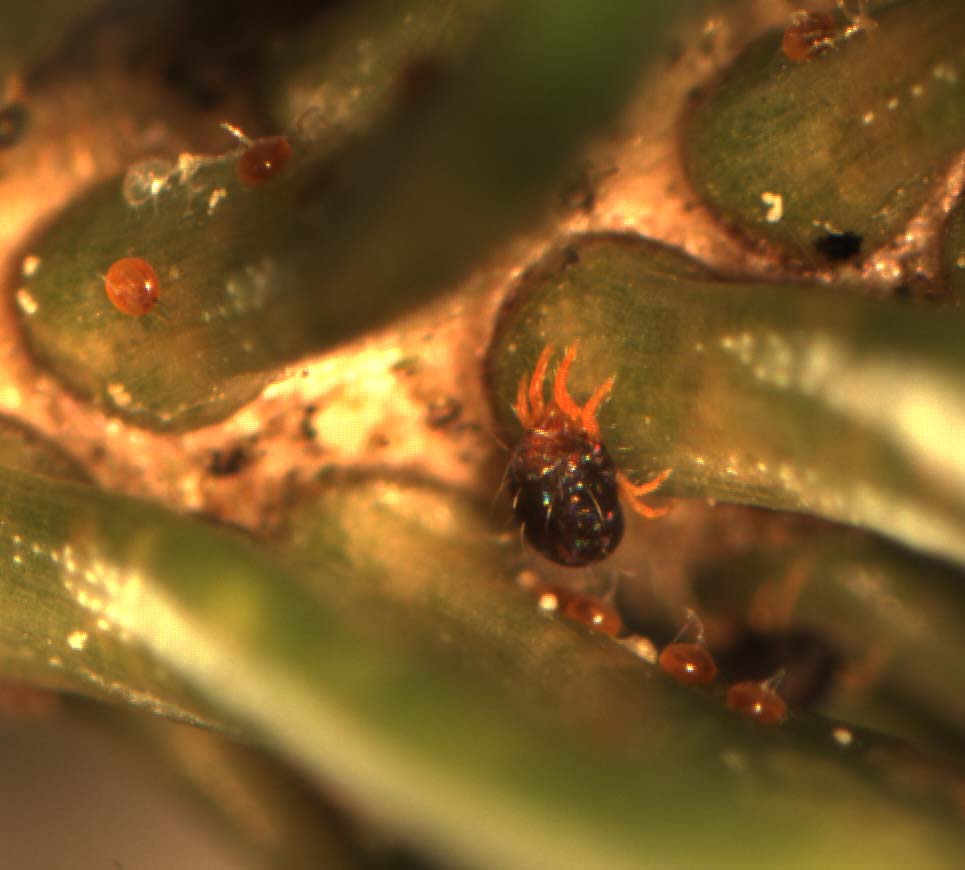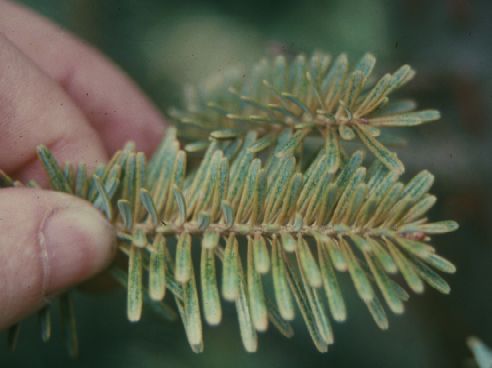Scouting for Spruce Spider Mites
go.ncsu.edu/readext?792385
en Español / em Português
El inglés es el idioma de control de esta página. En la medida en que haya algún conflicto entre la traducción al inglés y la traducción, el inglés prevalece.
Al hacer clic en el enlace de traducción se activa un servicio de traducción gratuito para convertir la página al español. Al igual que con cualquier traducción por Internet, la conversión no es sensible al contexto y puede que no traduzca el texto en su significado original. NC State Extension no garantiza la exactitud del texto traducido. Por favor, tenga en cuenta que algunas aplicaciones y/o servicios pueden no funcionar como se espera cuando se traducen.
Português
Inglês é o idioma de controle desta página. Na medida que haja algum conflito entre o texto original em Inglês e a tradução, o Inglês prevalece.
Ao clicar no link de tradução, um serviço gratuito de tradução será ativado para converter a página para o Português. Como em qualquer tradução pela internet, a conversão não é sensivel ao contexto e pode não ocorrer a tradução para o significado orginal. O serviço de Extensão da Carolina do Norte (NC State Extension) não garante a exatidão do texto traduzido. Por favor, observe que algumas funções ou serviços podem não funcionar como esperado após a tradução.
English
English is the controlling language of this page. To the extent there is any conflict between the English text and the translation, English controls.
Clicking on the translation link activates a free translation service to convert the page to Spanish. As with any Internet translation, the conversion is not context-sensitive and may not translate the text to its original meaning. NC State Extension does not guarantee the accuracy of the translated text. Please note that some applications and/or services may not function as expected when translated.
Collapse ▲Scientific name: Oligonychus ununguis
Where from: Native to North America
Type of pest: Cosmetic

A female spruce spider mite and multiple eggs among needles
Pest description:
- Spider mites are small and red to almost black in color. They have eight legs at maturity.
- Immature mites are smaller versions of the adults though with only three pairs of legs. While they are molting, they do not move and may appear dead.
- The eggs are small and round with a single hair coming out of the center. Only eggs are found in the winter.
- Occasionally spider mites will produce thin strands of webbing like a spider.

Spruce spider mite damage
Damage to tree: Spider mites are a pest of most conifers. The spruce spider mite feeds by sticking its feeding tube into the needles. This causes tiny yellow spots to form on an otherwise green needle. When the damage is light, the spots will be at the base of the needle. As feeding progresses and damage becomes worse, the entire needle will have spots. Use a magnifying lens and flatten needles to see damage clearly. When damage is heavy, the whole needle appears yellow from a distance, but on closer inspection, the spots are still evident. Needles with heavy damage are more likely to drop off in the fall or after the tree is harvested.
Where found in field:
- Spider mites are more of a problem at elevations lower than 3,000 feet in western North Carolina.
- Hotter and drier areas of the field such as south and southwestern exposures and ridge tops are more prone to spider mites.
- Spider mites are more of a problem along dusty roads as the dust that settles on needles kills predatory mites and not the more sedentary spider mite.
Where found in the tree: Look for spider mites on the most current growth. Spider mites are often found first on the bottom half of the tree.
Scouting method:
- Thorough scouting method specifically for mites: Scout throughout the block, looking at a single shoot from 10 to 20 trees. Choose trees with yellow foliage as well as trees at random. Select a small shoot (2 to 4 inches) from the lower half of the tree and examine foliage both front and back for mites, eggs and damage. If the tree exhibits mite damage, choose this shoot from the damaged areas. Keep track of the number of shoots examined and shoots with either spider mite eggs or mites. At the same time, also scout for rust mites. Also take note if predatory mites or other predators are found.
- In conjunction with twig aphid scouting: While scouting for twig aphids by beating foliage over a plate, also check some trees for spider mites and rust mites by selecting small shoots and scanning them with a magnifying lens for mite activity.
- Hot spot scouting: Identify hot spots of mite activity early in the rotation and mark on map or with flagging. Check these areas in summer and fall during periods of hot, dry weather and low humidity.
How weather affects: Spider mites are more of a problem during warm, dry weather and low humidity. That is because wet weather slows mite egg hatch. Also, predatory mites prefer humid conditions.
How to develop treatment threshold:
- Spider mite damage is seldom an issue in trees more than a year from harvest.
- In the past, treatment thresholds of between 10% to 40% of trees infested were used with the lower thresholds for trees nearer to market.
- Many miticides can only be applied once a year due to the possibility of resistance developing. Therefore, it’s important not to overuse the same material. If mites are present but wetter weather is in the forecast or mite predators are present, delay treatment to allow natural controls a chance to work. Scout again in 1 to 2 weeks to determine if mite numbers are declining naturally.
What can be confused with this pest/damage: Yellow foliage can be caused by many things such as poor fertility and scale feeding. However, with closer inspection, spider mite feeding is the only thing that causes tiny, pinpoint size yellow spots on an otherwise green needle. Scale feeding causes yellow blotches in an otherwise green needle that resembles a camouflage pattern. Nutrient problems cause an overall yellowing of the needle.
Important natural enemies:
- Predatory mites feed on spider mites. They are about the same size as spider mites but move much faster – running along the shoot or on a beat sheet. There are many species of predatory mite, ranging in color from reddish orange to tan.
- Lacewing larvae
- Minute pirate bugs
- Predaceous thrips
- During wet periods, spider mites may succumb to fungal pathogens. Their dead bodies will be covered by black fungus.
For more information on spruce spider mites including photographs and control recommendations, see Spruce Spider Mite.
For the complete Fraser fir scouting manual for western North Carolina, see Scouting Manual.


